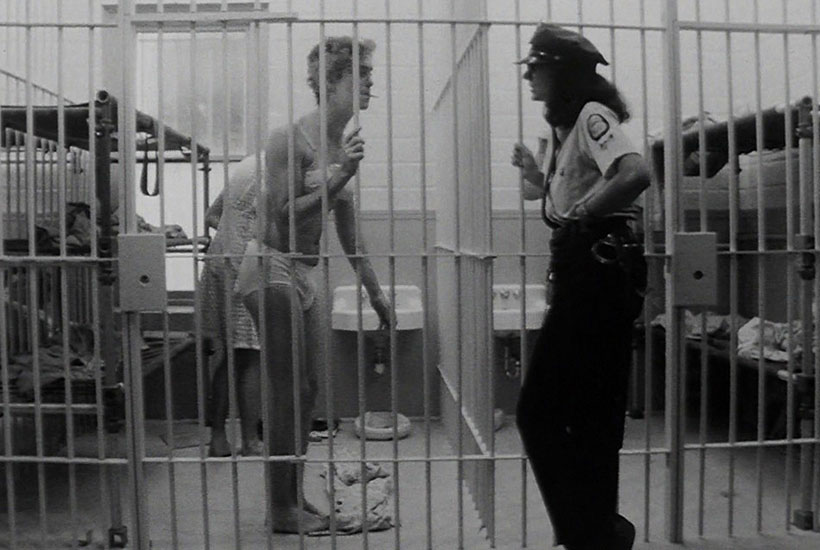This review was originally published in the Spring of 2019.

The Philadelphia Institute Of Contemporary Art (ICA) in coordination with the Lightbox Film Center has curated a retrospective of Tony Conrad’s work titled Introducing Tony Conrad: A Retrospective (which will be up and running from February 1st – August 11th, 2019). This is a momentous event for Philadelphia filmmakers and cinephiles. So much of Conrad’s work is represented that the once ambiguous connections between his work in film, video, music, painting and sculpture have been thoroughly illuminated. What emerges from this career spanning review is a portrait of a socially conscious intellectual with an irreverent sense of humor.
Approaching Tony Conrad from the perspective of the cinema one is immediately aware of Conrad’s relative uniqueness and the difficulty with which labels can be applied to his works. In the more renowned surveys of the American Underground Film by Sitney and Tyler, Conrad is grouped with Stan Brakhage, Jonas Mekas, Jack Smith and Andy Warhol as one of the eminent figures of the sixties. When, in practice, Conrad has more in common with Warhol as a painter, Michael Snow, Hollis Frampton and the Kuchar Brothers. This is primarily the result of Conrad’s embracing the possibilities of film as an “object” and his early interest in video production and its applications within a gallery space.
But the cinema is very much alive in Conrad’s visual works even if it is only philosophically. Consider his famous Yellow Movie (1973) which the late Jonas Mekas described as “one of the high achievements of the art of cinema”. The relationship of light to darkness in Yellow Movie in correlation with shape and relative space between object and spectator reiterates our collective relationship to screens, be it a television, theater or computer. By addressing the pieces that constitute a person’s relationship to “the screen” Conrad highlights our dependency upon this relationship as well as the matter that we are conditioned to accept and trust in this one sided relationship. This touches upon the primary theme of Conrad’s work post-The Flicker (1966); power vs. powerlessness. Wip (2013), also on display at the ICA, is perhaps the best example of this theme.
Conrad envisioned Wip originally as an answer to the Women In Prison films of the seventies done as a kind of grotesque (one part Norman Mailer’s Beyond The Law and one part Kuchar Brothers’ camp extravaganza). However, by the time Wip was completed (Conrad shot all of the footage in the early eighties), it had been reimagined as an installation rather than a narrative film. An hour of 16mm footage shot during the early eighties is projected against a wall from within a set-piece (two connected jail cells) featured in the film. So the images of prisoners in cages that are aggressively oppressed, albeit comically, are seen with the shadows of the bars from the set cutting through the image. As a spectator we are then placed within our own cell, cast as mute and helpless observers. This gives the piece urgency and a visceral connection to our own physical space (via the set) that renders every suggestion of victimization by the guards in the film as overwhelmingly powerful.
Wip is probably the strongest piece of video installation on view at the ICA. The hour long run time of the 16mm footage is worth sitting through in order to be fully immersed in the experience. My brief description does not do justice to the variety and nuance of the experiences Wip has to offer.
These are only two of over a dozen pieces involved in a direct discourse with cinema. I picked these two simply because they were my two favorites at the show. But I highly recommend that anyone with an interest in the cinema and its various applications attend Introducing Tony Conrad: A Retrospective.
